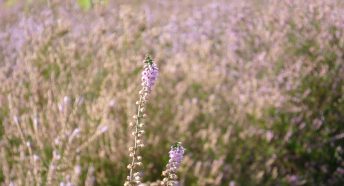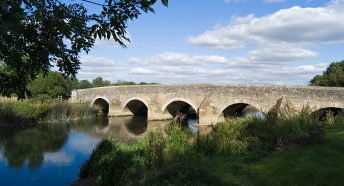P is for public parks
Our series of posts helping you to explore our county is an A-Z of Bedfordshire places, landscapes and history. Each post includes tips for walks and places to visit.
In this post we put the spotlight on three of Bedfordshire’s urban parks – Bedford Park, Wardown Park in Luton and Houghton Hall Park in Houghton Regis.
What is a public park?
Public parks are usually owned and managed by public bodies. In the case of the parks in this feature that means Bedford Borough Council, Luton Borough Council and a partnership between Houghton Regis Town Council and Central Bedfordshire Council. They are free to visit but may charge for special events.

The early days of public parks
The large open urban green spaces that we take for granted today were a Victorian innovation. The rapid growth of towns and industries meant that increasingly people no longer lived within walking distance of the countryside. Campaigners and politicians noted the impacts of this on people’s physical and mental health and began to champion the development of green spaces that could be accessed by workers and their families. Early examples were opened in Liverpool, Halifax, Birmingham and Bristol. The parks were free to enter and were often home to a whole variety of features including sports facilities, ornamental gardens, woodland walks, fountains and statues.
Bedford Park
Bedford Park is a classic Victorian park. It is Grade II listed and is the largest urban park in the town, retaining much of the Victorian design. Bedford Park was laid out to the designs of Messrs Barron & Son of Derby and opened in 1888, with the ornamental gates being ceremonially unlocked by the Marquis of Tavistock.

The contract included creating carriage drives, planting shrubs, excavating the lake, laying turf and seeding meadows. It cost £7,000 and 18,000 plants and shrubs were planted. A refreshment pavilion opened at the same time as the park, with an ornamental bandstand added in 1892. The cricket pavilion was built in the early 1900s.
During the First World War the park was used by the 51st Highland Division who were stationed in the town. At its peak 22,000 soldiers were being trained at any one time. The park became home to a cookhouse and was used for training as well as for leisure events and church parades. Later, temporary huts housed members of the Women’s Army Auxiliary Corps and Royal Engineers.
Today there are sporting facilities, a cafe and the park is home to a range of events including a summer concert series. It has been argued that the combination of the Victorian Foster Hill Road Cemetery and the Park represent one of the finest urban treescapes in Britain and there’s a Tree Trail to help visitors discover the range of trees in the park. The Embankment in Bedford also dates from the Victorian period, with both the park and the riverside promenade providing opportunities for nineteenth century urban dwellers to enjoy fresh air and exercise.

Wardown Park
Luton’s Wardown Park is of a slightly later date and opened in 1904, just a few years into the reign of Edward VII. Like Bedford Park, it is Grade II listed and within walking distance of the town centre. Local councillors and civic leaders arranged for the purchase of Wardown House, park and gardens to be purchased on behalf of the people of Luton. The price was £17,000 and a further £6,000 would be spent on laying out new features. Over the next few years the pleasure gardens were opened, paths were added along with a lake with island and boat house. Sporting facilities included a bowling green and cricket pitch, while music lovers benefited from a bandstand.

A restoration programme was completed in 2005 which saw the boating lake and historic features such as the suspension bridge and fountain refreshed, and the green spaces enhanced for both people and nature.

During the First World War the house was used as a hospital, firstly by the Royal Army Medical Corps and then by the Voluntary Aid Detachments of the British Red Cross Society. It became a museum in 1931 and today is still open to the public as Wardown House, Museum & Art Gallery. It is free to enter and includes period rooms, galleries exploring Luton life, including the hat and lace industries, as well as the Bedfordshire & Hertfordshire Regiment Gallery.

Houghton Hall Park
Houghton Hall Park in Houghton Regis is a much more recent project, opening to the public in 2019. The transformation was thanks to funding from the Heritage Lottery Funding and the Big Lottery Fund under the ‘Parks for People’ scheme. Located in the urban heart of Houghton Regis, there are approximately 42 acres of parkland and woodland, providing outdoor space for local community groups, schools and families. The kitchen and formal gardens have been restored to reflect the park’s heritage. Fruit and vegetables in the kitchen garden for use in the cafe and for community events such as Halloween pumpkin carving. There are surfaced paths and accessible play areas, making it suitable for a range of visitors.

The site management plan developed by the partners in the project included a plan to increase biodiversity across the site. The range of habitats includes woodland, meadow and gardens.
The Houghton Regis Heritage Society worked with the park to uncover its history and helped with a range of projects including interpretation boards to highlight the park’s historic features. The plan also included opening up historic sightlines where possible. The house was commissioned by Alice Brandreth in the 1700s and the surrounding parkland was transformed in the style of contemporary landscape designers like Capability Brown and Humphrey Repton. At this time the views would have been uninterrupted over several miles to Blows Down.

Green Flag Awards
All three parks were awarded a Green Flag in 2025. The scheme recognises and rewards publicly accessible parks and green spaces, judging them across a range of criteria which include maintenance, environmental management, accessibility, biodiversity, landscape and heritage, community involvement, and marketing and promotion.
Explore the Parks








